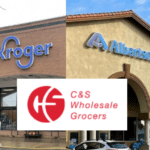
Whether you use coupons or not, one of the keys to saving money on your groceries is stockpiling – buying multiples of an item when you can get it at the lowest price, so you have enough to last you until the next time it’s on sale. But stockpiling has suffered a bit of a backlash, after Extreme Couponing-esque stashes started looking more like hoarding than savvy shopping.
So the term has fallen out of favor lately. And now, the very practice of stockpiling appears to be falling off as well. Retailers and marketers have remarked that fewer of us seem to be stocking up.
So does that mean they’re ready to ramp up the deals, to get us to buy more?
No, in fact. Some are doing quite the opposite.
Kraft recently became the latest company to comment on the shift away from stockpiling. “Our moms had a pantry full of product,” Kraft Foods Group CEO Tony Vernon recently told investors. “Today, moms have maybe a day or two, and in some cases, nothing in the pantry. They’re buying day to day… We describe this as consumers using stores as their pantry.”
And rather than trying to counter this trend, by issuing more coupons and having more sales, Kraft is simply learning to adjust to it. “This is not an environment that we, or our industry, can expect to promote our way out of,” Vernon said. “The typical ‘pantry load’ promotion doesn’t seem to work as well.”
As a result, Kraft noted that it had recently dialed back its promotional activity. Why offer big savings, if no one is going to take advantage of them? On salad dressing, for example, some of Kraft’s competitors have been engaging in “significant promotion, 10 for $10 in merchandising and pricing,” Vernon said on an earlier investors conference call. “And frankly, we are electing not to go deep and play… We are doing some promotion, but we’re not going to the 10 for $10 level.”
Hope you stocked up on salad dressing when you had the chance, then.
Kraft blames the economy for our dwindling stockpiles. But the country’s largest traditional grocery chain says there’s more to it than that. “The budget-conscious customer is increasing their trips as a budgetary tool,” Kroger President and Chief Operating Officer Rodney McMullen recently acknowledged, at the company’s annual investors conference. But he also observed that “the customer who’s eating more at home is buying the fresh food closer to the prep time, rather than a stockup trip and sticking it in the freezer, which isn’t really convenient. If you get home at six o’clock and you want to have dinner on the table at 6:30, it’s actually easier to stop on the way home and get the fresh product or keep two or three days’ worth in the fridge.”
Added Kroger CEO David Dillon, “The amount of inventory that a household will have in their pantry of food, that number has shrunk quite a little bit from where it had been before. People are using up what they have and are using leftovers more often and are finding ways to make use of that.”
So when it comes to the recent trend away from stockpiling, the economy is certainly one factor. More shoppers just don’t have the resources, to spend now in order to save later. Kroger is well known for its “10 for $10”-type stockup sales, but it’s increasingly been shifting its focus toward everyday low pricing, to attract the day-to-day shopper.
But the observation that shoppers are stopping by more often, to get fresh food to prepare right away, could also be an indication that consumers are increasingly turning away from cans and boxes of processed foods that make up many stockpiles. Sure, you can get that stuff cheap, but you don’t necessarily want to live on it.
So maybe the demise of the stockpile isn’t necessarily a bad thing. Coupon columnist Jill Cataldo even campaigned recently to come up with a new term altogether. “For some people, the word ‘stockpiling’ has become synonymous with ‘hoarding’ or ‘buying big’,” she wrote. “I think we need a new word for what we do!”
Readers suggested “backup”, “safety stock” or the term that Kroger’s CEO used, “inventory”. Regardless of the term used, Cataldo advises that it’s wise not to give up on the practice altogether. “Couponing without some form of stockpiling is tough,” she noted, “as we ‘win’ the couponing game by buying when prices are low, then using our on-hand inventory when prices are high.”
In the end, keeping a modest stash of products that you use, is still the best way to save. So despite what recent trends indicate, and how retailers and companies are adjusting, you’d do best not to give up on stockpiling.
Whatever you choose to call it.










